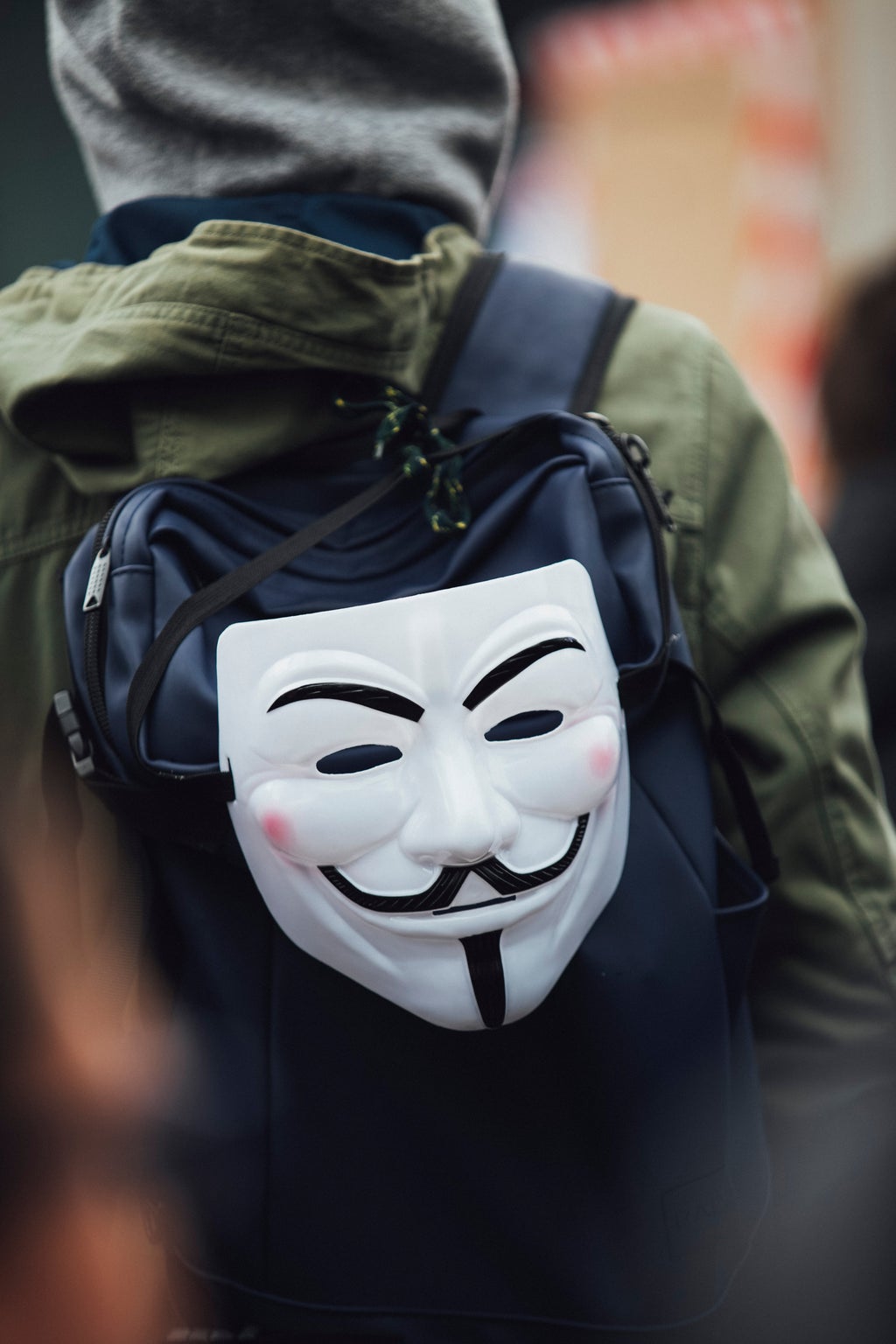When I discover a movie I genuinely love, it usually takes up a very special place in my heart. I had always heard of V for Vendetta, but I never bothered to give it the attention it truly deserved. During Halloween season, I’d often see people wearing Guy Fawkes masks at parties and I’d wonder, “What’s so interesting about that mask?” and “What’s up with all the hype? This quarantine gave me the answer to my questions. I finally said to myself, “Why not give it a chance?” Forgive me, V, for not having seen you before. I promise not to fail your memory on this November 5th.
Despite being released in 2005, V for Vendetta is still a must-watch film, regardless of how old it is. It really is that memorable!
“Remember, remember the fifth of November. The gunpowder, treason and plot. I know of no reason why the gunpowder and treason should ever be forgot.”
Based on the graphic novels by writer Alan Moore and comic artist David Lloyd, the story begins with a virus attacking the world (coincidence with our situation in 2020? Possibly). Simultaneously, the British government has opted for a new authoritarian leader.
On November 4th, we meet Evey Hammond (Natalie Portman), a young employee of the British Television Network (BTN) station. Evey takes to the streets inside a quarantined city, where she runs into three secret government police officers known as “Fingermen.” After being harassed by the officers, a vigilante wearing a Guy Fawkes mask appears to her rescue. With honor, he introduces himself as V (Hugo Weaving) and explains to Evey that he was currently on his way to hear an orchestra, the musical union of the demolition of the Old Bailey. On the following day, November the 5th, V calls on the British people to rebel against their government; and it is not until next year’s November the 5th that there will be another orchestra, playing a melody to the demolition of the House of Parliament. From here, both Evey and V set out to put an end to the government that has forbidden both them and the people their freedom.
But why bother to start this whole revolution in the first place? Clearly, V is trying to give the people a message, and these messages hidden within the entire plot captivate me and drive me to rewatch the movie relentlessly. If you love to analyze cinematography, V for Vendetta is for you. Therefore, I will be doing a brief political analysis of what this majestic film seeks to portray to the audience, but beware! There may be some spoilers ahead.

“People shouldn’t be afraid of their government. The government should be afraid of their people,” is the film’s message to spectators about their reality as citizens. Above all, it is society itself that becomes the State, as sociologist and political economist Max Weber presents it; and it is then that the State justifies its power through legalized violence and domination. Once a bureaucracy has been established, the government mobilizes the administration and human resources that belong to the State. Throughout the movie, V advocates that those rights granted by the State are being violated by the government. Therefore, it’s the government that wants the State to become submissive to its orders. The film presents this idea of submission in several ways.
We can start by mentioning that the government featured in V for Vendetta is not the typical parliamentary government we are familiar with. The world of Vendetta is run by a fascist government where free expression is prohibited, and bigoted hatred against minority groups is encouraged and implemented. Does it remind you of someone? Yes, you thought right.
The government led by Chancellor Adam Sutler (John Hurt) is very similar to what Hitler’s fascist government was: a regime where hatred was openly promoted, and all those against the government were imprisoned and murdered; but obviously, the country’s non-political citizens could not find out the truth about the atrocities that were being committed. In the words of this Chancellor, the people cannot be allowed to believe what V’s character is trying to expose because it would supposedly lead to chaos. This fear mongering shows us the government’s complete domination and their forceful use of power over the people, especially to groups that “deviate” from their implemented regulations.
V for Vendetta also exposes how governments promote certain ideologies in order to convince the people to believe in them too. Why? Well, it’s an easier way to control the citizens. The film also brings up how governments often censor and retaliate against people who protest their decisions. As Evey says, “Artists use lies to tell the truth, while politicians use them to cover the truth up.” What is the truth then?

A real life example of this type of oppression is the Black Lives Matter protests in the United States that have flooded the news during the last few months, where government-issued police have responded with violence and brutality in order to “calm down the situation.” They use excessive force under the pretext that the acts of the protestors are wrong because they are obstructing “the peace.”
How are the people supposed to speak up and fight for their rights when they are so violently suppressed when they try? In the film, we see different protests, and the fascist government condemning them as violent. In response, V sets out on a mission to demonstrate to the citizens that the only real violence is produced by this same government and that, if they are victims of this violence, they are fully within their right to use violence in order to demand justice against tyranny.
Additionally, V for Vendetta provides a lot of deep symbolism. In V’s own words, symbols empower people. One of these symbols became the last piece of domino that he had when he used dominoes to make a V sign, representing the last battle that he organized to destroy the House of Parliament so that November the 5th would be truly remembered. In the end, the audience sees the fulfillment of V’s mission as he orchestrates one last government demolition concert. Within that event, the entire city came out dressed as V. At the end of the day, although we may not always remember who was behind it all, their idea is preserved and immortalized. In this regard, V won the battle against the government.
Overall, V for Vendetta is an excellent movie that can be analyzed from a socio-political perspective, but also appreciated as an art form. We also get to watch, and be inspired by, Evey becoming an empowered woman. Thanks to V’s efforts, the government has no option but to collapse in the face of an outraged and justice-seeking society. In short, V forges a movement that invites us to remember our own November the 5th.


